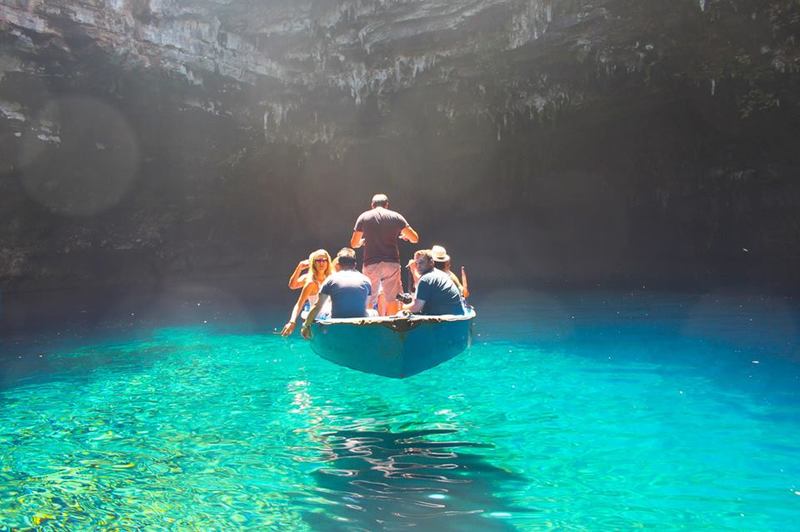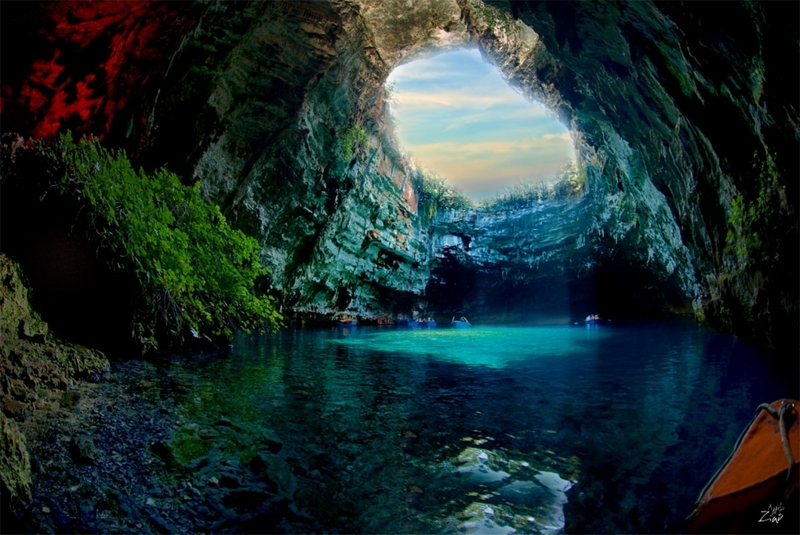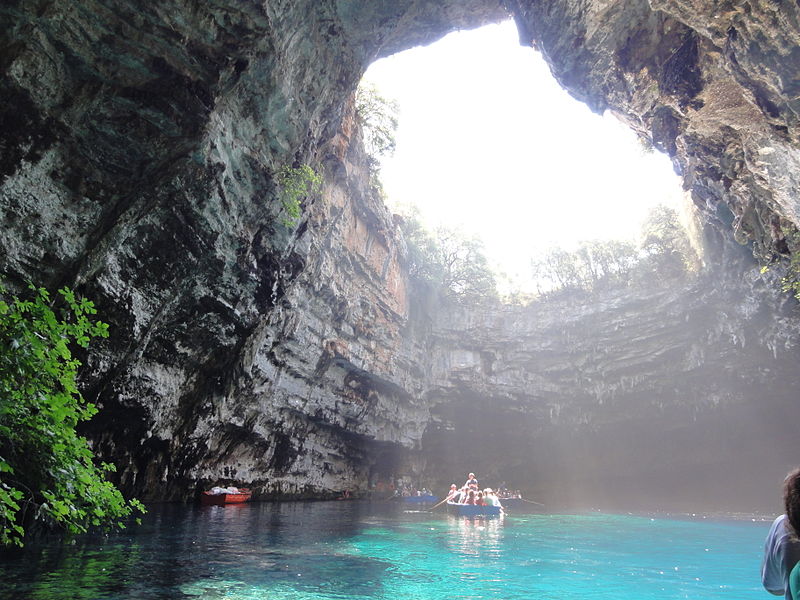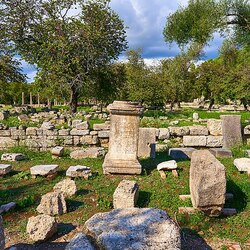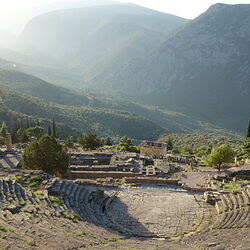Melissani
In Greece, on the island of Kefalonia, there is an amazingly beautiful cave lake Melissani. The rays falling from above, refracted in the water, illuminate the cave with an azure color, which together with the transparent water gives it a mythical appearance.

Melissani Cave was formed about 20,000 years ago, and 4,000 years ago its dome collapsed, exposing a hidden underground lake. According to legend, the lake is inhabited by nymphs, and it was used for religious rituals. This is also evidenced by the finds: a small figure of the god Pan, the patron saint of shepherds and forests, and a disk with dancing nymphs depicted on it. All the relics found are in the museum of the island's main city, Argostoli. For unknown reasons, the lake was completely forgotten in ancient times and rediscovered only in 1951. After completing the exploration of the cave, it was opened to tourists in 1963.
Lake Melissani is located in a cave measuring 40 by 160 meters, the depth of the lake is 10-30 meters and the water is so clear that the bottom of Lake Melissani can be seen anywhere. The water has an interesting feature - it is brackish here. Salt water comes here from deep, through karst channels, one of these channels sucks up salt water near the town of Argostoli, 13 km from the lake. This unique natural phenomenon was called "catavotres", its essence lies in the fact that water is sucked into a crevice located below sea level and, passing 15 km underground, exits into Sami Bay and Lake Melissani. To find out, geologists lowered 160 kg of paint into the crevice and searched for places where it would manifest itself. The cunning Greeks set up a watermill in this place, which is powered by suction water.

For the convenience of visiting the lake, a tunnel was pierced here, at the end of which a pier for pleasure boats was built. Having recruited a group of tourists, the boaters take them forward to the vivid impressions of the beauties of Lake Melissani. Stalactites and stalagmites can be seen all around, the bottom can be seen through the water column, and the water changes its hue depending on the time of day.

